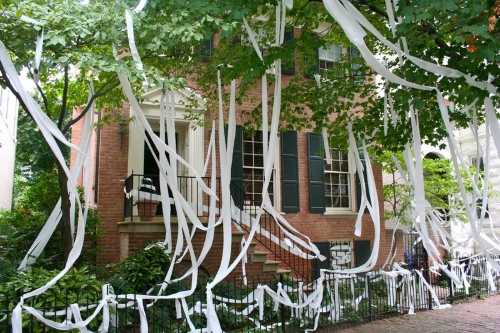WC '16 Contest 1 S4 - TP
View as PDFWoburn Challenge 2016-17 Round 1 - Senior Division

You and your friends have had enough of this Halloween nonsense. You nabbed your fair share of candy in the past, sure, but you wouldn't be caught dead parading around in a costume now that you're in high school. That doesn't mean this dumb excuse for a holiday has to go to waste, though… No way. It's time to have some real fun.
There are
nice-looking houses on your street,
but they won't be looking nice for long. Having borrowed your family car
for the night, you'll be taking a joy ride down the street with your
friends and some bathroom supplies in tow. Your plan is to take
passes along the street, and on each pass, you'll
choose a random pair of distinct houses (chosen uniformly at random from
all possible pairs) to be your targets. Then, those two houses will each
receive a little punishment… Bam! Toilet paper to the face!
Once you've TP-ed a house in this fashion, it will be thoroughly covered in the stuff. It may get chosen as a target again on future passes, but applying toilet paper multiple times will have no additional effect on it.
This is sure to be a sweet night, but now you're wondering just how much carnage you and your friends will inflict on your lame neighbourhood. What's the expected number of different houses which will have been TP-ed at least once by the end of Halloween?
In test cases worth of the points,
and
.
In test cases worth another of the points,
and
.
In test cases worth another of the points,
and
.
Input Specification
The first and only line of input consists of two space-separated
integers and
.
Output Specification
Output one line consisting of a single real number - the expected number
of houses which will be covered in toilet paper after all passes,
with at most
absolute or relative error.
Sample Input
3 2Sample Output
2.666667Sample Explanation
There are possible pairs of distinct houses -
,
, and
.
Therefore, there are
equally-likely pairs of houses which
will be TP-ed on the two passes.
of these result in only
distinct
houses being covered in toilet paper (for example,
being targeted on
both passes). The other
of them result in all
houses being covered.
Therefore, the expected number of houses which will be covered in toilet
paper is
.
Comments